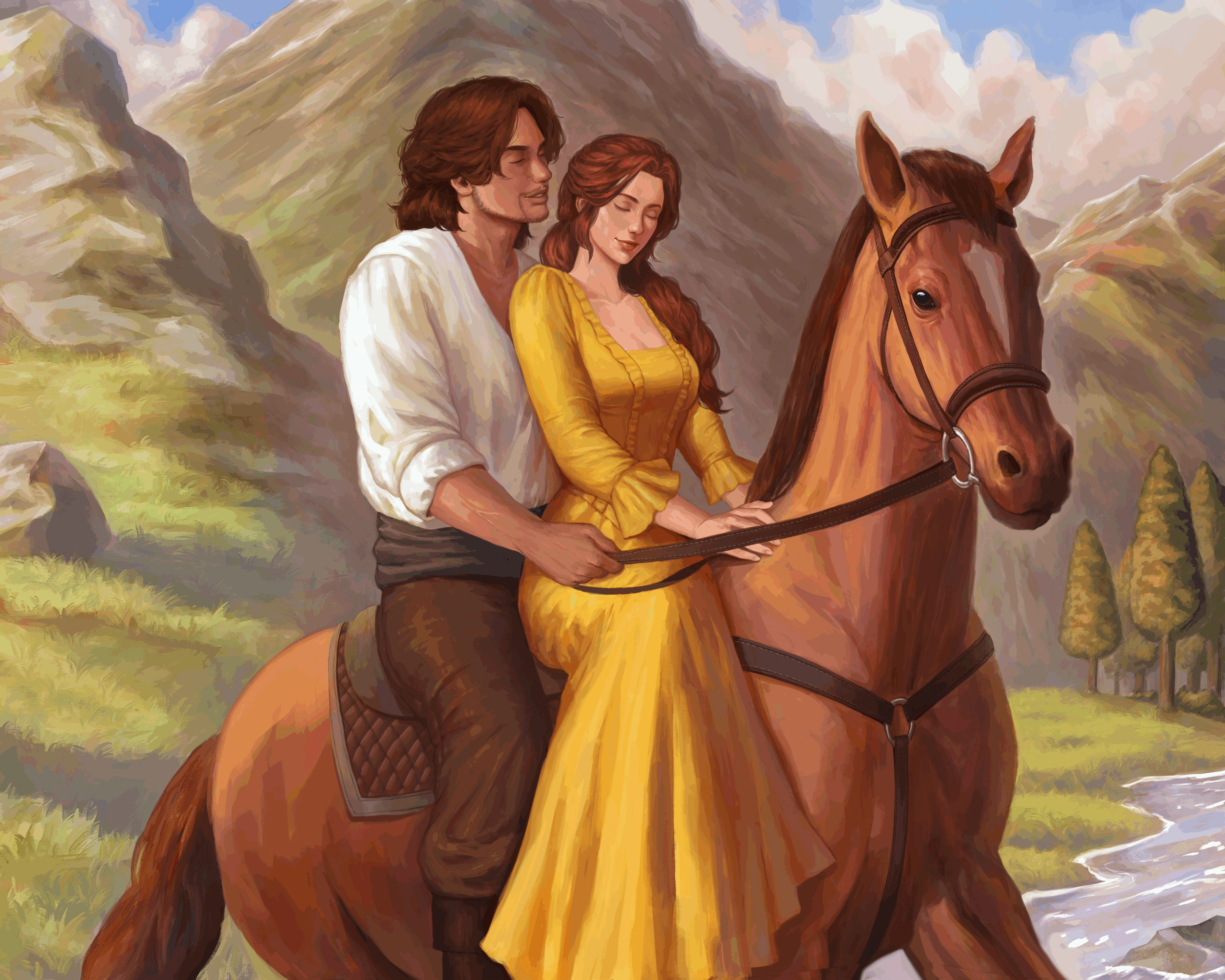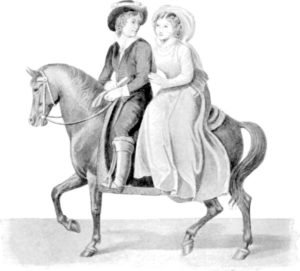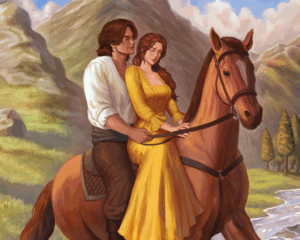
The Only One Horse Trope and How to Write it Realistically
Ahh, the Only One Horse trope—a staple of the Fantasy Romance genre. I fell in love with it while watching Willow for the first time; I enjoyed the tension and forced proximity it created between Madmartigan and Sorcha. I’ve since used in it my own books. It can be so much fun to read, and even more fun to write as an author. As a long-time equestrian and horse owner myself, I love seeing horses take important roles in the various plot points, but it can be a real pet peeve if it’s done unrealistically.
Firstly, let’s get the idea of is it even possible? out of the way. To do that, we’ll have to take a glance at history. Doubling up on horseback is traditionally called “riding pillion,” from the Scottish Gaelic word pillean, which refers to a small cushion placed behind the saddle to make a comfortable seat for a second rider. This was often how women rode during a time when riding was looked down on for women before the invention of the side saddle. I will say that riding astride in general for women was not completely prohibited, just discouraged. There are historical accounts of proficient women riders traversing the countryside astride, though that’s a topic for another time. Without a pillion, the second rider would have to sit directly on the horse’s back behind the saddle. This, of course, would be a bit precarious, but anyone who can ride could probably manage it—especially with their arms around the other rider. After all, that’s what we’re here for!

SADDLE AND PILLION.
(From “The Procession of the Flitch of Bacon,” by THOMAS STOTHARD, R.A.)
As women were generally lighter and, because of the associated stigma of women astride, often less skilled in riding, it made sense to place them in the pillion seat to place a lighter burden over the weaker part of the horse’s back. In those days, animal welfare was not as much of a concern as it is now; back then, human needs outweighed those of the horse. We’ve come a long way in our treatment of animals; we no longer ride horses into battle, thank goodness, and we no longer ride double. But, physically, it is not only possible, at one time, it was fairly common.
Now that we know that it is both possible and historically accurate, the next consideration is: How can we, as writers, use it realistically? Due to the increased burden upon the horse, the best way to make this believable is to save it for dire situations: the two characters are on the run, they’re injured, they’re in enemy territory and need to get away quickly… etc. It otherwise just wouldn’t make a lot of sense to overburden your only means of transportation unless at great need. After all, you wouldn’t want to risk injuring the animal and having to go on foot. Another consideration is that this is best reserved for short distances for the same reasons. With extra weight placed on the weaker part of the back, the horse will tire more quickly.
Other considerations include the size and weight of the riders. In my novel, Adella of the Campos, the main character, Adella, briefly shares her horse with an injured man she rescues from an enemy camp, Kol. Adella is described as being a small woman, and though Kol is tall, he is introduced as “lean, almost gaunt” and “half-starved.” Therefore, it is feasible an ordinary-sized horse could carry these two lighter riders a short distance, though Kol falls from the saddle due to his injuries before long. If you wish to use this trope for larger characters, you will likely want to give them a larger horse, such as a knight’s destrier, a draft breed, or, in a fantasy setting, a magical fairy steed, perhaps? Magic can be used to smooth out so many of the finer details.
Anyway, I hope this helps to give you some idea of how to write this fun Romantasy trope with confidence. Happy writing!
Until next time,
Audra

In Legends of Andolin: Adella of the Campos, Kol and Adella briefly share one horse during their travels


No Comments
Sorry, the comment form is closed at this time.